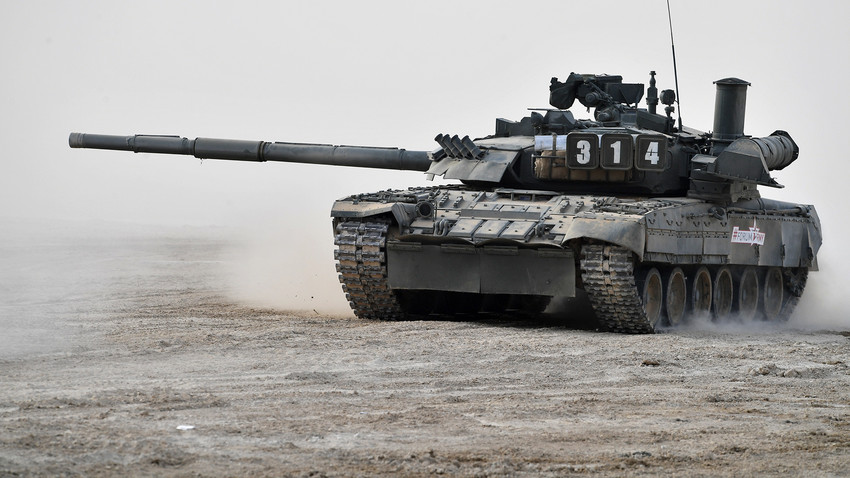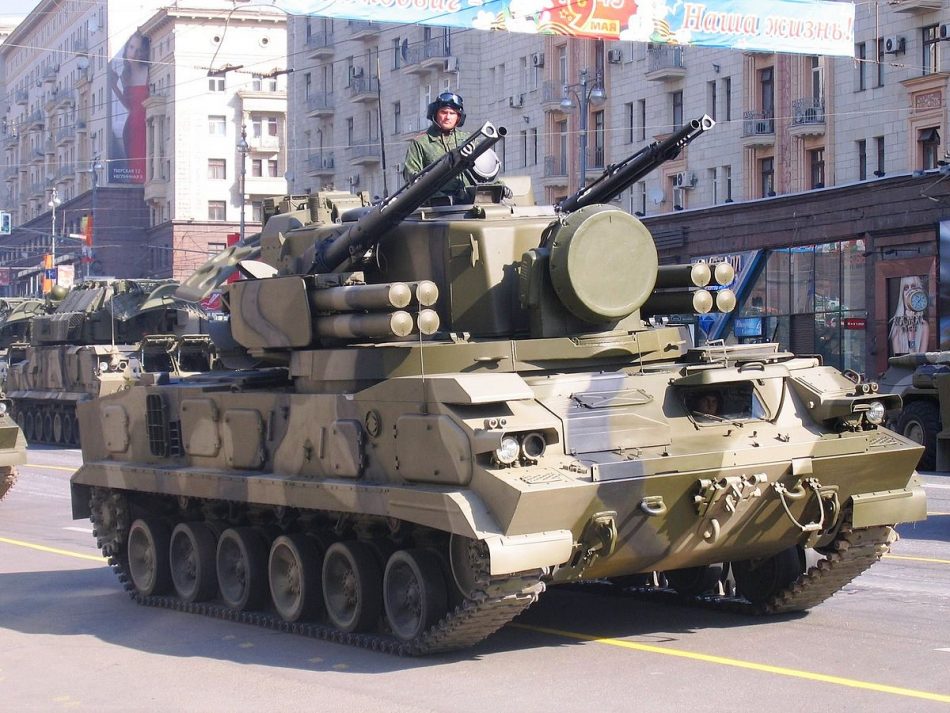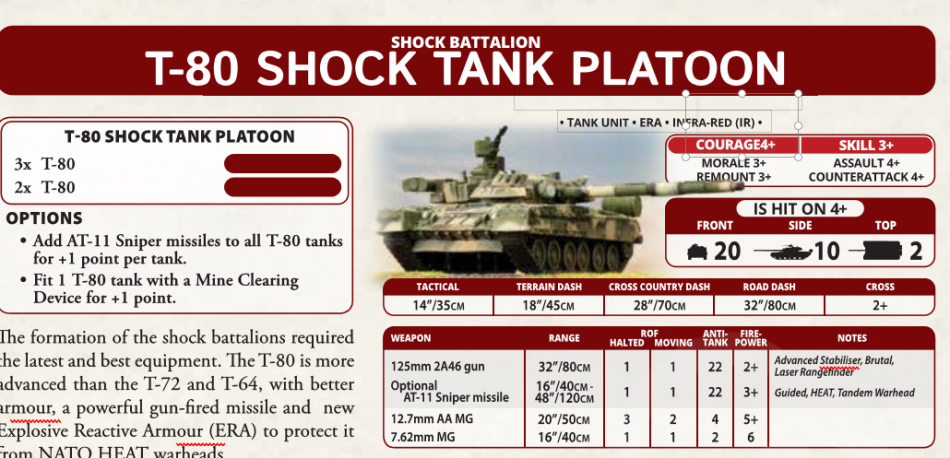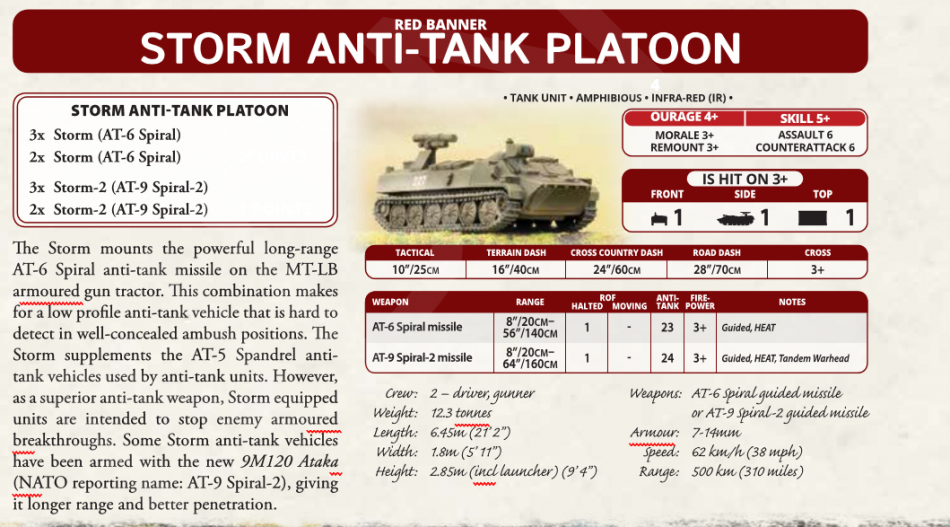Soviet WWIII Book: How to Build and Play a New Soviet Force
In my previous , I discussed how excited I was for this book to come out for and now I want to share with you some of the lists and new toys I want to run in the future. Along with these new lists, I also want to explore how my playing style may change with this new book and which of my older lists will need to be adjusted with the release of the new book. The Past
Like many gamers I have a huge problem, I have a collection of models that just keeps on growing. My first jump into the game was with the Leopard book, and I collected a West German and Soviet force from the initial Team Yankee book. Soon after I collected a British army, then East German, then the Canadians, and finally an IDF force. Way too many models some may say.
Essentially, I jumped from force to force because each book in Team Yankee seemed to throw a new wrinkle in the game. Another factor for collecting so many armies is that you can take an Allied formation to backup your main formation so I can take really good British infantry with the hard-hitting Leopard-2 tanks was an option I wanted to explore.

I soon realized that besides a growing collection I was not developing a playing style with any of these factions since they play so differently. Maybe a year ago I picked the Warsaw Pact as my main faction in the game, one reason was my huge collection of WP models and the fact I worked on the Polish forces release a few years before.
Recently I took a Polish force to an event and I did rather well; and here is that force.

I liked the mass this force had and that at 120 points I did not have to make too many tough choices of what to include. This is an attacking force that tends to do well when the mission has rules that define a real attacker and defender. This list also has good AAA assets and for the first-time artillery took up a spot on my list.
My 120-point Soviet list with the updated rules look like this;

While I never got this force to a table, I felt that the 120-point level justified the inclusion of the T-64s and all the support that this force needed to be successful.
Along Comes a New Book
Months ago, I was able to see the new book in development and I knew the T-80 would be a beast. I also knew that to balance the game with the new NATO “super” tanks (M1A1, Challenger & Leopard2A5) that the Warsaw Pact would have to get a comparable unit. The T-80 is a very good tank but has some of the same drawbacks that previous Soviet tanks had, the RoF of 1, and the poor morale and skill ratings.

The plus side to the ledger is very compelling, a 20 FA, ERA, and the AT22 Spiral missile that can shoot on the move. With these upgrades, the cost of a T-80 (HQ costs) is 9 points each (10 if you add the missile) as compared to the T-64 (6-pts, 7 with missile) and the T-72 (5-pts). This makes the missile firing T-80 twice the cost of the T-72 which I used to run in a unit of 21 tanks. Another cost factor to consider is that the missile for the T-80 is one point per tank where the missile for the T-64 is two points for the entire unit.
This makes the T-80 a very expensive choice for a Soviet player and perhaps a major change to their playing style. As you can see with the two lists above, I was about mass and now with the new T-80, I would not be able to do that anymore unless Battlefront ups the recommended points to 200.
Hordes, Missile Spam and Haters
Soon after Volksarmee was released we started to see a lot of players fielding massive armies to play competitively with. Lists with 40-50 vehicles were not uncommon and tables were flooded with massive amounts of T-55 tanks, BMPs, and in some cases Leopard1 MBTs.
A lot of players thought this was a good way to play the game and battles looked like parking lots full of tanks. During this time, I only saw one gamer play a horde very well and that would be Pete Zerphy who had a lot of success with his East German BMP horde. Many players tried to emulate this; however, they did not enjoy the success he did because these types of lists are not easy to play and had a serious learning curve.

Another type of list that a lot of players fielded was the infantry missile spam. The British forces from Iron Maiden allowed players to flood the table with a ton of missile teams that became tough to beat. I did not see this very much here in my area (which has a very big TY following) and seemed to be something players from outside of the US complained a lot about. When looking at how this tactic would work in a game a lot of factors would have to be met.
First, the mission must suit defense and the table must look like a billiards table. Also, once you close in, the missile spam does not work since they have a minimum effective range. Missile spam was never an option for a Soviet player and now with the updated rules, they die quickly under artillery fire.
New Soviet Meta?
How does this book change the horde meta that we have seen in the past? In some cases, with will not change much since all of the old horde lists are still in the book and with the addition of the T-55 to the Soviet inventory, you may see it get worse. The question becomes is will the horde fair as well with the new books that are coming out and I wish I had a better answer than “well it depends”.

I feel that Soviet players should work the T-80 in their lists, the tank is just too good to leave out and its one way you can take on other “super tanks”. The fact you can now just take a platoon of them and add that to a force you have been playing for a few years means that you will not have to alter your playing style very much. Taking three T-80 tanks with missiles is 25-pointsand is well worth the cost and you can use them to support your main attack.

Another change Soviet player should consider is swapping out the BMP-3 for their infantry. I know the most popular horde BMP was the BMP-1, however for a full company of BMP-3s you are playing an extra 10 points over the BMP-1 and only 6 points more when upgrading from the BMP-2. The reason why this is worth the points is that at long range the BMP can shoot an AT 21 missile on the move and at close range, the 100mm and 30mm guns can take care of any threat. The FA 5 also helps a lot when coming under fire from smaller caliber weapons. A BMP-3 horde will be tough to beat.
Shocking Change
The Shock Battalion is one of the most interesting forces in the book. Unlike all other Soviet forces, it is hit on a 4+ and has better skill and morale ratings. This force will not be a big one and may resemble some of the West German Leopard2 lists I used to push around. One neat thing with this force is that its smaller size means players who were scared off by the dollar cost of a competitive Soviet force now have a cheaper option.

So here is the force I am looking at if I plan to field a Shock Company.
Core
1x T80 HQ (w/Sniper Missile)- 11 Points
3 x T80 (w/Sniper Missile)- 33 Points
3 x T80 (w/Sniper Missile)- 33 Points
Support
BMP-3 Company- 24 points (6 x BMP-3, 6 AK, 5 RPG-7VR, 1 PKM LMG)
BMP-3 Scout Platoon- 9 Points (3 vehicles)
Tunguska Platoon- 8 Points (4 vehicles)
Formation Support
Storm-2 Platoon- 4 Points (3 vehicles) these are upgraded since the last book with an AT 24 missile
Total-120 Points

This is a very small Soviet force, and you need to move out quickly and attack. This list can put out a ton of missile shots at range until you move close to the enemy, then use the Brutal guns of the tanks and BMPs to dig out any infantry that may be dug in near an objective. I would not defend with this list and the one list that will cause you fits is a real Warsaw Pact horde army since you will not get enough shots per turn to reduce a horde in time.

For long time Soviet players, I would not recommend running this force in a tournament until you can understand what it does and how different it can be from your previous lists. This force may also be a good “starter” force for players who wanted to collect and play Soviets.
I think Soviet players now have a lot of options for not only weapons systems but playing style as well and the new book is a welcomed addition to Team Yankee.
